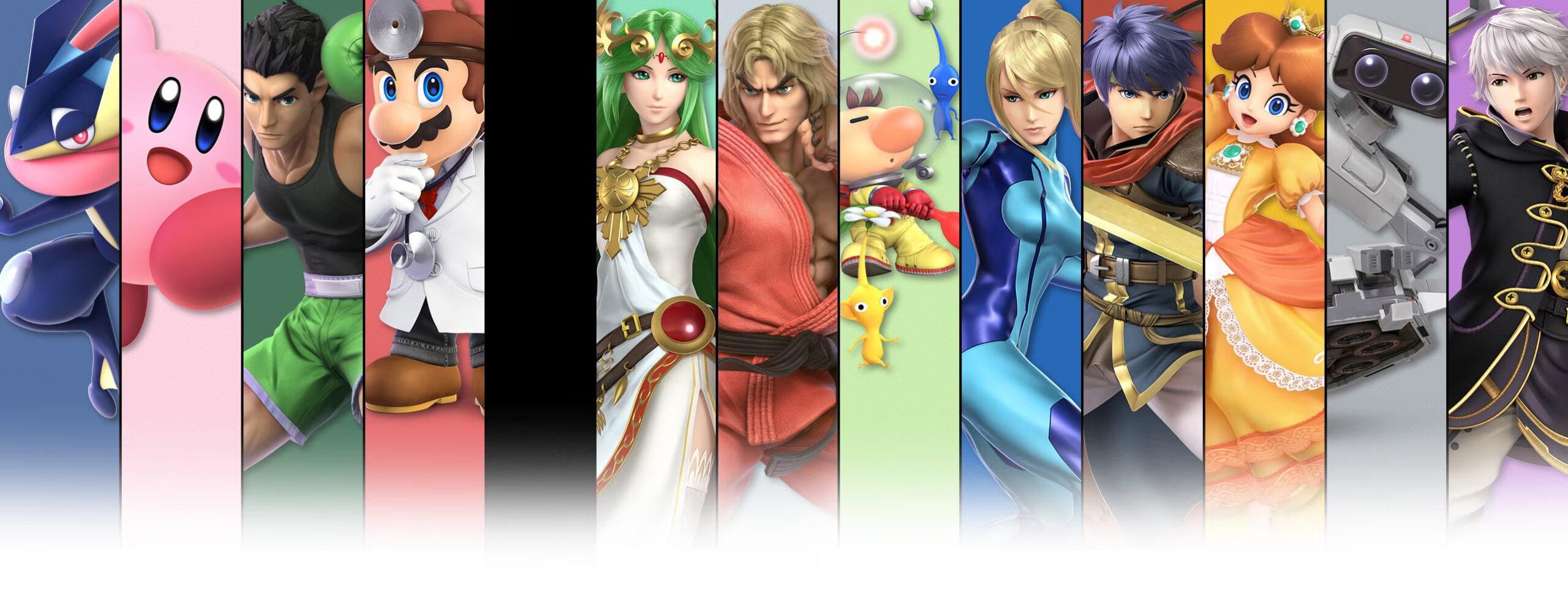For this week’s critical play, I played Super Smash Bros. Ultimate, a crossover fighting video game on the Nintendo Switch in which characters from different games come together and form a roster of playable characters that players can use to fight against each other. Each character has a unique set of abilities and skills that allow them to fight in different ways, some more advantageous against others and vice versa. I examined this game through a feminist lens by playing as female characters, comparing the experience of playing as them verses the male characters, and looking at the way in which they are portrayed.
To acknowledge the good, there are ways in which this game does indeed aim to dismantle stereotypes of women in the context of combat. Typically in games, particularly older games, women may be portrayed as being inferior to men in terms of combat, and a stereotypical role women play more often than men is the damsel in distress — we see this in Mario with Peach, Zelda in the Legend of Zelda series, and more. In Smash, playing as female characters does not inherently put you at any mechanical disadvantage compared to male characters — it more so has to do with the abilities and skills of the character itself that may not necessarily be independent of gender in what the abilities and skills actually are, but at least are independent in terms of level of strength. The female characters all have unique combat skills that allow them to theoretically stand up to any opponent. There are definitely female characters among the characters that are considered by many to be top tier characters in terms of strength — Peach, Pyra/Mythra, Palutena, Lucina, to name a few.
However, there are also ways in which the game fails to adequately provide an equal playing experience from a feminist perspective — I would argue that it fails more than it succeeds. Though representation is certainly not all there is to equality and justice for feminism as mentioned in the reading, it is an important piece. And when we look at the whole roster of playable characters, male characters dominate over female characters in terms of number — 43 male characters, 12 female characters, 11 selectable (can choose a male or female version), 8 ambiguous, 1 both (Ice Climbers — you control two characters, one male and one female). That alone already makes this game be more catered to their male audience than their female counterpart and reinforces the idea that women are a minority in games. Additionally, many of the characters who are women are overly sexualized in their appearance. Perhaps one could argue that this is not a fault of the Smash but rather the game in which the female characters originate from, but Smash continuing to portray them in this way only further perpetuates harmful and objectified images of women. The hypersexualization of these female characters makes it seem as though their inclusion into the game was also a way of catering to the game’s male audience, rather than to serve as proper representation for women. To address these issues, Super Smash Bros. Ultimate should aim to be more intentional about making sure there are at least the same amount of female characters to play as their male counterparts to not have them be the minority, and explore ways of visually representing the female characters that keep their authentic self from their original game without needing to hypersexualize them.
In what other ways can Super Smash Bros. Ultimate better intertwine feminist theories to make it a more inclusive game?



